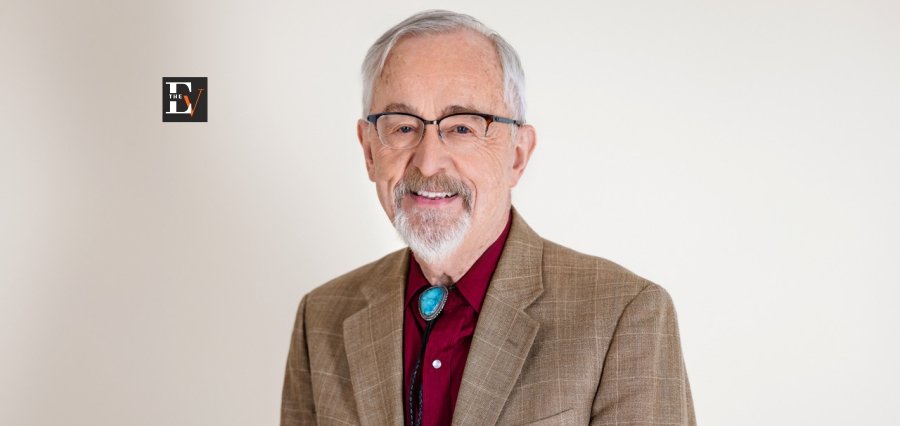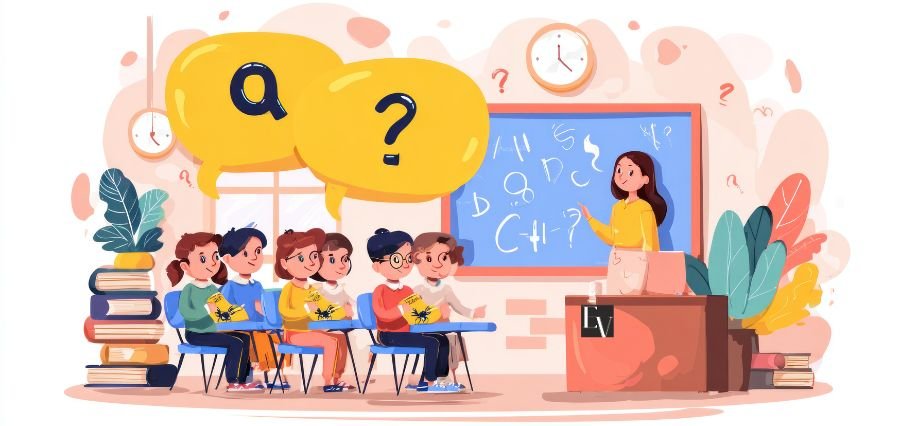Richard Larson’s name is synonymous with innovation, leadership, and a lifelong commitment to meaningful education. From his early fascination with physics in a quiet Massachusetts town to becoming a revered figure at the Massachusetts Institute of Technology (MIT), his path was not just a pursuit of academic accolades—it was a purposeful journey toward global impact. The pivotal moment that ignited this voyage occurred in high school, where a love for the simplicity and elegance of physics eventually opened doors to MIT. But it wasn’t just academia that called to him; it was the magic of teaching and the electrifying connection with students that shaped the arc of his remarkable career.
Throughout four decades of his tenure at MIT, Professor Larson seamlessly blended academic rigor with practical application. He wore many hats: teacher, mentor, inventor and global educator. His evolution from Electrical Engineering to Urban Studies, and ultimately to interdisciplinary disciplines such as the Institute for Data, Systems, and Society (IDSS), reveals a man who was never satisfied with the given state of matters.
Now retired, Professor Larson reflects on a legacy that spans continents and generations. His story is not merely about achievements, awards, or publications—it’s about how a teacher’s curiosity can evolve into a global mission. Through his books, public lectures, and mentorship, he continues to inspire. Even at 82, he remains as committed as ever to knowledge sharing, carrying forward his mantra: “82 and still lots to do!” His life demonstrates how a single spark, like watching a student’s eyes light up, can ignite a lifetime of transformation, both for the educator and the world.
Falling in Love with Physics
Richard Larson’s academic journey began in the scenic town of Needham, Massachusetts. He describes his high school as an ideal environment—nestled atop a hill, filled with passionate teachers, and intellectually stimulating. It was in this inspiring setting that he discovered his fascination with physics. The beauty of physics, with its foundational principles governing all movement and force, deeply resonated with him. In contrast, biology, with its memorization-heavy content—held little appeal.
His excellence in physics translated into a perfect score on the SAT Physics exam, a milestone that helped pave his path to MIT. Initially inspired by his father, Gilbert C. Larson, an accomplished Electrical Engineer, Richard enrolled in MIT’s Electrical Engineering Department. It was a natural progression—one that would eventually lead to three degrees from MIT: a Bachelor of Science, a Master of Science, and a PhD. While his doctoral research gravitated toward Operations Research (OR), his academic roots in engineering laid the foundation for a career filled with interdisciplinary exploration.
The Transformational Experience of Teaching
While pursuing his graduate degrees, Richard Larson worked as a Teaching Assistant—a role that became a turning point in his life. Teaching MIT undergraduates was not just a means to an end; it was a revelation. The thrill of explaining complex concepts and watching students’ faces light up with understanding brought him an unparalleled sense of fulfillment. These early experiences in the classroom sparked a realization: his true calling might not be engineering in its traditional sense, but education.
This insight marked the beginning of a transition—from aspiring engineer to lifelong educator. He found joy in not just understanding complex topics himself, but in making them accessible and intuitive for others. His ability to connect with students emotionally and intellectually became a hallmark of his teaching style. The classroom was no longer just a place of knowledge transfer—it was a space of inspiration and engagement. That moment of connection, when a difficult topic became clear to a student, was addictive. It planted the seeds of a career that would later bridge disciplines and continents.
Evolving Academic Identity Over Four Decades
Over more than forty years at MIT, Richard Larson wore many academic hats. What started in the Electrical Engineering department soon expanded into broader and more interdisciplinary fields. He moved into Urban Studies and Planning, transitioned to Civil Engineering, and eventually found his intellectual home in the Institute for Data, Systems, and Society (IDSS). This interdepartmental initiative aligned perfectly with his growing interest in the intersection of technology, data, and social systems.
Throughout this journey, he embraced change as a constant. His career was never a straight line—it was a dynamic arc shaped by curiosity, social relevance, and a deep sense of purpose. Whether it was analyzing traffic patterns, designing urban systems, or exploring the educational power of the internet, Larson continually aligned his work with evolving global challenges. This intellectual fluidity allowed him to remain relevant while pioneering new academic frontiers.
Birth of a Global Education Movement
One of the most transformative phases of Professor Larson’s career began with the rise of the Internet. While many viewed it as a technological convenience, he saw in it a revolutionary opportunity—the chance to democratize education. He envisioned a world where high-quality learning resources were not restricted to elite institutions but freely available to anyone with an internet connection. This vision gave rise to MIT BLOSSOMS—Blended Learning Open Source Science or Math Studies.
Through BLOSSOMS, Larson led a team of dedicated volunteers—many of them MIT graduate students—in creating 86 interactive video lessons. These lessons, hosted permanently on YouTube, continue to empower students and educators across the globe. They are more than educational content; they are digital ambassadors of MIT’s educational ethos. BLOSSOMS exemplifies Larson’s core belief: true education is not just about content delivery, but about fostering curiosity and critical thinking through engagement.
Leadership Through Engagement and Empathy
Richard Larson’s leadership style is best described as inclusive and grounded. Rather than commanding from above, he led by example. He prioritized regular, one-on-one meetings with students and staff, fostering an environment of mutual respect and open dialogue. His leadership was never about hierarchy—it was about connection. This approach not only made him a respected academic but also a beloved mentor.
His ability to make others feel seen and heard became a cornerstone of his work at MIT and beyond. Whether guiding a student through a complex equation or brainstorming with a global team on educational access, Larson’s humility and accessibility stood out. He believed that leadership is not about directing but about empowering—and he lived this belief daily.
Turning Challenges into Growth Opportunities
Even with an illustrious career, Richard Larson faced moments of self-doubt and challenge. He recalls one such turning point vividly—while teaching Applied Probability, a student asked for an intuitive explanation of a complex equation. Larson realized, to his dismay, that he couldn’t provide one. This humbling experience became a catalyst for growth. It exposed the superficiality in his understanding and compelled him to deepen his knowledge. From that day forward, he made a personal vow: to always understand his material at a fundamental level before stepping in front of a classroom or audience.
This incident reflects Larson’s growth mindset and commitment to integrity in teaching. Rather than retreating from the challenge, he leaned into it—transforming a moment of vulnerability into a lifelong principle. It’s a lesson that continues to resonate with educators striving for authenticity and excellence.
Recognition and Global Contributions
Richard Larson’s career is marked by prestigious awards and impactful contributions. His first book, Urban Police Patrol Analysis, won the Lanchester Prize from the Operations Research Society of America. He co-authored Urban Operations Research with Amedeo Odoni, a seminal text still cited decades later. His leadership roles included presidencies at ORSA and INFORMS, and he provided consultancy to global institutions like the World Bank, United Nations, and the U.S. Department of Justice.
His innovative work on queuing theory gained national attention, featured in major media outlets like NPR, CNN, and The New York Times. As Co-Director of the MIT Operations Research Center and later a Founding Fellow of INFORMS, Larson helped shape the field. His recent accolade, the 2025 Albert Nelson Marquis Lifetime Achievement Award, recognizes a career defined by both depth and longevity.
Balancing Ambition with Personal Life
Despite a demanding academic career, Larson made it a priority to nurture his personal life. He shared an extraordinary partnership with his late wife, M. Elizabeth (Liz) Murray. For 43 years, they supported each other as life partners and intellectual collaborators. Liz played a pivotal role in many of Larson’s projects, including serving as Project Manager for MIT BLOSSOMS.
Their marriage was not just about companionship—it was a union of minds and missions. From raising three children to presenting at global conferences, Liz and Richard were inseparable. Her passing two years ago left a void, but Larson continues to cherish their shared memories and the collaborative spirit they fostered. He believes that his most effective navigation of life’s pressures came from integrating family into his professional world, rather than compartmentalizing the two.
Advice for Future Educators
For aspiring educators and academic leaders, Professor Larson’s advice is succinct yet profound: Follow your intellectual passions, not the crowd. Forge new paths rather than following existing ones. He encourages individuals to focus less on fitting in and more on contributing original thoughts. His career, filled with bold initiatives like MIT BLOSSOMS and MIT LINC, exemplifies this ethos.
He advocates for depth over breadth, innovation over imitation, and purpose over prestige. His belief in education as a transformative force—not just for individuals, but for societies—remains central to his message to the next generation.
Looking Forward with Energy and Purpose
At 82, Richard Larson remains an active voice in public discourse on education and systems thinking. His latest book, Model Thinking for Everyday Life, aims to distill complex systems into accessible insights for a general audience. Through public talks and media interviews, he continues to share knowledge, inspire innovation, and shape public understanding.
His signature phrase, “82 and still lots to do,” is more than a personal mantra—it’s a reminder that intellectual vitality knows no age. With his enduring curiosity and energy, Larson exemplifies the idea that the pursuit of knowledge and impact can—and should—last a lifetime.





